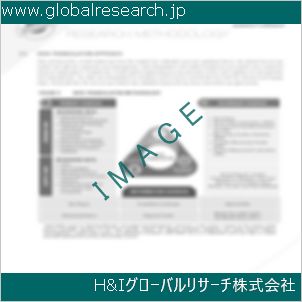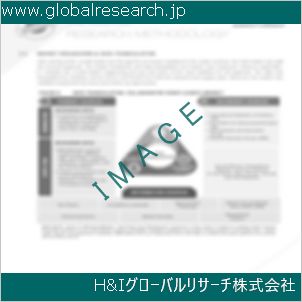1 市場概要
1.1 製品概要と範囲
1.2 市場推定の注意点と基準年
1.3 タイプ別市場分析
1.3.1 概要:車両用燃料電池システムの世界市場規模(タイプ別消費価値):2020年対2024年対2031年
1.3.2 PEMFCs
1.3.3 SOFC
1.3.4 その他
1.4 用途別市場分析
1.4.1 概要:車両用燃料電池システムの世界市場規模(用途別):2020年対2024年対2031年
1.4.2 商用車
1.4.3 乗用車
1.5 車両用燃料電池システムの世界市場規模と予測
1.5.1 グローバル燃料電池システム(車両用)の市場規模(2020年、2024年、2031年)
1.5.2 車両用燃料電池システムの世界販売数量(2020年~2031年)
1.5.3 車両用燃料電池システムの世界平均価格(2020-2031)
2 メーカープロファイル
2.1 ブルーム・エナジー
2.1.1 Bloom Energyの詳細
2.1.2 Bloom Energyの主要事業
2.1.3 Bloom Energyの車両用燃料電池システム製品とサービス
2.1.4 Bloom Energyの車両用燃料電池システムの販売数量、平均価格、売上高、粗利益率、市場シェア(2020-2025)
2.1.5 Bloom Energyの最近の動向/更新
2.2 パナソニック
2.2.1 パナソニックの概要
2.2.2 パナソニックの主要事業
2.2.3 パナソニックの車両用燃料電池システム製品およびサービス
2.2.4 パナソニックの車両用燃料電池システムの販売数量、平均価格、売上高、粗利益率、市場シェア(2020-2025)
2.2.5 パナソニックの最近の動向/更新
2.3 プラグパワー
2.3.1 プラグパワーの詳細
2.3.2 プラグパワーの主要事業
2.3.3 プラグパワーの車両用燃料電池システム製品およびサービス
2.3.4 プラグパワー 燃料電池システム(車両用)の販売数量、平均価格、売上高、粗利益率、市場シェア(2020-2025)
2.3.5 プラグパワーの最近の動向/更新
2.4 東芝ESS
2.4.1 東芝ESSの詳細
2.4.2 東芝ESSの主要事業
2.4.3 東芝ESS 車両用燃料電池システム製品およびサービス
2.4.4 東芝ESS 車両用燃料電池システムの販売数量、平均価格、売上高、粗利益率、市場シェア(2020-2025)
2.4.5 東芝ESSの最近の動向/更新
2.5 アイシン精機
2.5.1 アイシン精機の詳細
2.5.2 アイシン精機主要事業
2.5.3 アイシン精機 車両用燃料電池システム 製品とサービス
2.5.4 アイシン精機 車両用燃料電池システムの販売数量、平均価格、売上高、粗利益率、市場シェア(2020-2025)
2.5.5 アイシン精機の最近の動向/更新
2.6 トヨタ
2.6.1 トヨタの詳細
2.6.2 トヨタの主要事業
2.6.3 トヨタの燃料電池システム(車両用製品およびサービス)
2.6.4 トヨタの燃料電池システム(車両用)の販売数量、平均価格、売上高、粗利益率、市場シェア(2020-2025)
2.6.5 トヨタの最近の動向/更新
2.7 バルラード
2.7.1 バルラードの詳細
2.7.2 バルラードの主要事業
2.7.3 ボールードの燃料電池システム(車両用製品およびサービス)
2.7.4 Ballard 車両用燃料電池システムの販売数量、平均価格、売上高、粗利益率、市場シェア(2020-2025)
2.7.5 Ballardの最近の動向/更新
2.8 ヒュンダイ・モビス
2.8.1 ヒュンダイ・モビスの詳細
2.8.2 ヒュンダイ・モビスの主要事業
2.8.3 ヒュンダイ・モビスの車両用燃料電池システム製品およびサービス
2.8.4 ヒュンダイ・モビスの車両用燃料電池システムの販売数量、平均価格、売上高、粗利益率、市場シェア(2020-2025)
2.8.5 ヒュンダイ・モビスの最近の動向/更新
2.9 シノハイテック
2.9.1 SinoHytecの詳細
2.9.2 SinoHytecの主要事業
2.9.3 SinoHytec 燃料電池システム(車両用)製品およびサービス
2.9.4 SinoHytec 車両用燃料電池システムの販売数量、平均価格、売上高、粗利益率、市場シェア(2020-2025)
2.9.5 SinoHytecの最近の動向/更新
2.10 三菱
2.10.1 三菱の詳細
2.10.2 三菱の主要事業
2.10.3 三菱自動車用燃料電池システム製品およびサービス
2.10.4 三菱自動車用燃料電池システムの販売数量、平均価格、売上高、粗利益率、市場シェア(2020-2025)
2.10.5 三菱の最近の動向/更新情報
2.11 ハイドロジェニクス
2.11.1 ハイドロジェニクス詳細
2.11.2 ハイドロジェニクス主要事業
2.11.3 ハイドロジェニクス 燃料電池システム(車両用)製品およびサービス
2.11.4 ハイドロジェニクス 燃料電池システム(車両用)の販売数量、平均価格、売上高、粗利益率、市場シェア(2020-2025)
2.11.5 水素工学の最近の動向/更新
2.12 リファイア
2.12.1 リファイアの詳細
2.12.2 Refireの主要事業
2.12.3 Refire 燃料電池システム(車両用製品およびサービス)
2.12.4 リファイア 燃料電池システム(車両用)の販売数量、平均価格、売上高、粗利益率、市場シェア(2020-2025)
2.12.5 リファイアの最近の動向/更新
2.13 パール・ハイドロジェン
2.13.1 Pearl Hydrogenの詳細
2.13.2 Pearl Hydrogenの主要事業
2.13.3 Pearl Hydrogen 車両用燃料電池システム製品およびサービス
2.13.4 Pearl Hydrogen 燃料電池システム(車両用)の販売数量、平均価格、売上高、粗利益率、市場シェア(2020-2025)
2.13.5 パール・ハイドロジェンの最近の動向/更新
2.14 サンライズ・パワー
2.14.1 サンライズ・パワーの詳細
2.14.2 サンライズ・パワーの主要事業
2.14.3 サンライズ・パワーの車両用燃料電池システム製品およびサービス
2.14.4 サンライズ・パワー 車両用燃料電池システムの販売数量、平均価格、売上高、粗利益率、市場シェア(2020-2025)
2.14.5 サンライズ・パワーの最近の動向/更新
2.15 SFCV
2.15.1 SFCVの詳細
2.15.2 SFCVの主要事業
2.15.3 SFCV 燃料電池システム(車両用製品およびサービス)
2.15.4 SFCV 燃料電池システム(車両用)の販売数量、平均価格、売上高、粗利益率、市場シェア(2020-2025)
2.15.5 SFCVの最近の動向/更新
2.16 Dayco
2.16.1 Daycoの詳細
2.16.2 Daycoの主要事業
2.16.3 Dayco 車両用燃料電池システム製品およびサービス
2.16.4 Dayco 車両用燃料電池システムの販売数量、平均価格、売上高、粗利益率、市場シェア(2020-2025)
2.16.5 Daycoの最近の動向/更新
3 競争環境:車両用燃料電池システム(メーカー別)
3.1 グローバルな車両用燃料電池システムの販売数量(メーカー別)(2020-2025)
3.2 グローバル 燃料電池システム(車両用)の売上高(メーカー別)(2020-2025)
3.3 グローバル 燃料電池システム(車両用)メーカー別平均価格(2020-2025)
3.4 市場シェア分析(2024年)
3.4.1 メーカー別燃料電池システム(車両用)の出荷量($MM)と市場シェア(%):2024
3.4.2 2024年の車両用燃料電池システムメーカー市場シェア上位3社
3.4.3 2024年の車両用燃料電池システムメーカー市場シェア上位6社
3.5 車両用燃料電池システム市場:全体的な企業足跡分析
3.5.1 車両用燃料電池システム市場:地域別足跡
3.5.2 燃料電池システム(車両用)市場:企業製品タイプ別足跡
3.5.3 車両用燃料電池システム市場:企業製品用途別足跡
3.6 新規参入企業と市場参入障壁
3.7 合併、買収、合意、および協力関係
4 地域別消費分析
4.1 地域別グローバル燃料電池システム市場規模
4.1.1 地域別グローバル燃料電池システム市場販売数量(2020-2031)
4.1.2 地域別車両用燃料電池システム消費額(2020-2031)
4.1.3 地域別車両用燃料電池システム平均価格(2020-2031)
4.2 北米の車両用燃料電池システム消費額(2020-2031)
4.3 欧州の車両用燃料電池システム消費額(2020-2031)
4.4 アジア太平洋地域における車両用燃料電池システムの消費価値(2020-2031)
4.5 南米の車両用燃料電池システム消費価値(2020-2031)
4.6 中東・アフリカ地域 燃料電池システム 車両用消費価値(2020-2031)
5 市場セグメント別(タイプ別)
5.1 グローバル 燃料電池システム(車両用)販売数量(タイプ別)(2020-2031)
5.2 グローバル 燃料電池システム(車両用)の消費価値(タイプ別)(2020-2031)
5.3 グローバル 燃料電池システム(車両用)の平均価格(種類別)(2020-2031)
6 市場セグメント(用途別)
6.1 車両用燃料電池システムの世界販売数量(用途別)(2020-2031)
6.2 車両用燃料電池システムの世界市場規模(用途別)(2020-2031)
6.3 車両用燃料電池システムの世界平均価格(用途別)(2020-2031)
7 北米
7.1 北米の車両用燃料電池システムの販売数量(タイプ別)(2020-2031)
7.2 北米 燃料電池システム(車両用)のアプリケーション別販売数量(2020-2031)
7.3 北米 車両用燃料電池システム市場規模(国別)
7.3.1 北米 車両用燃料電池システムの販売数量(国別)(2020-2031)
7.3.2 北米の車両用燃料電池システム消費額(国別)(2020-2031)
7.3.3 アメリカ市場規模と予測(2020-2031)
7.3.4 カナダ市場規模と予測(2020-2031)
7.3.5 メキシコ市場規模と予測(2020-2031)
8 ヨーロッパ
8.1 欧州 燃料電池システム(車両用)のタイプ別販売数量(2020-2031)
8.2 欧州の車両用燃料電池システム販売数量(用途別)(2020-2031)
8.3 欧州の車両用燃料電池システム市場規模(国別)
8.3.1 欧州の車両用燃料電池システム販売数量(国別)(2020-2031)
8.3.2 欧州の燃料電池システム(車両用)の消費額(国別)(2020-2031)
8.3.3 ドイツ市場規模と予測(2020-2031)
8.3.4 フランス市場規模と予測(2020-2031)
8.3.5 イギリス市場規模と予測(2020-2031)
8.3.6 ロシア市場規模と予測(2020-2031)
8.3.7 イタリア市場規模と予測(2020-2031)
9 アジア太平洋
9.1 アジア太平洋地域 車両用燃料電池システムの販売数量(種類別)(2020-2031)
9.2 アジア太平洋地域における車両用燃料電池システムの販売数量(用途別)(2020-2031)
9.3 アジア太平洋地域における車両用燃料電池システム市場規模(地域別)
9.3.1 アジア太平洋地域における車両用燃料電池システムの販売数量(地域別)(2020-2031)
9.3.2 アジア太平洋地域における車両用燃料電池システム消費額(地域別)(2020-2031)
9.3.3 中国市場規模と予測(2020-2031)
9.3.4 日本市場規模と予測(2020-2031)
9.3.5 韓国市場規模と予測(2020-2031)
9.3.6 インド市場規模と予測(2020-2031)
9.3.7 東南アジア市場規模と予測(2020-2031)
9.3.8 オーストラリア市場規模と予測(2020-2031)
10 南米
10.1 南米の車両用燃料電池システム販売数量(種類別)(2020-2031)
10.2 南米 車両用燃料電池システムの販売数量(用途別)(2020-2031)
10.3 南米 車両用燃料電池システム市場規模(国別)
10.3.1 南米の車両用燃料電池システム販売数量(国別)(2020-2031)
10.3.2 南米の車両用燃料電池システム消費額(国別)(2020-2031)
10.3.3 ブラジル市場規模と予測(2020-2031)
10.3.4 アルゼンチン市場規模と予測(2020-2031)
11 中東・アフリカ
11.1 中東・アフリカ 燃料電池システム 車両販売数量(タイプ別)(2020-2031)
11.2 中東・アフリカ地域における車両用燃料電池システムの販売数量(用途別)(2020-2031)
11.3 中東・アフリカ 車両用燃料電池システム市場規模(国別)
11.3.1 中東・アフリカ地域 車両用燃料電池システムの販売数量(国別)(2020-2031)
11.3.2 中東・アフリカ地域 燃料電池システム(車両用)の消費額(国別)(2020-2031)
11.3.3 トルコ市場規模と予測(2020-2031)
11.3.4 エジプト市場規模と予測(2020-2031)
11.3.5 サウジアラビア市場規模と予測(2020-2031)
11.3.6 南アフリカ市場規模と予測(2020-2031)
12 市場動向
12.1 車両用燃料電池システム市場ドライバー
12.2 車両用燃料電池システムの市場制約
12.3 車両用燃料電池システムのトレンド分析
12.4 ポーターの5つの力分析
12.4.1 新規参入の脅威
12.4.2 供給者の交渉力
12.4.3 購入者の交渉力
12.4.4 代替品の脅威
12.4.5 競争の激化
13 原材料と産業チェーン
13.1 車両用燃料電池システムの原材料と主要メーカー
13.2 車両用燃料電池システムの製造コストの割合
13.3 車両用燃料電池システムの製造プロセス
13.4 産業バリューチェーン分析
14 流通チャネル別出荷量
14.1 販売チャネル
14.1.1 直接エンドユーザー向け
14.1.2 卸売業者
14.2 車両用燃料電池システム 典型的な卸売業者
14.3 車両用燃料電池システムの典型的な顧客
15 研究結果と結論
16 付録
16.1 方法論
16.2 研究プロセスとデータソース
16.3 免責事項
1.1 Product Overview and Scope
1.2 Market Estimation Caveats and Base Year
1.3 Market Analysis by Type
1.3.1 Overview: Global Fuel Cell System for Vehicle Consumption Value by Type: 2020 Versus 2024 Versus 2031
1.3.2 PEMFCs
1.3.3 SOFC
1.3.4 Others
1.4 Market Analysis by Application
1.4.1 Overview: Global Fuel Cell System for Vehicle Consumption Value by Application: 2020 Versus 2024 Versus 2031
1.4.2 Commercial Car
1.4.3 Passenger Car
1.5 Global Fuel Cell System for Vehicle Market Size & Forecast
1.5.1 Global Fuel Cell System for Vehicle Consumption Value (2020 & 2024 & 2031)
1.5.2 Global Fuel Cell System for Vehicle Sales Quantity (2020-2031)
1.5.3 Global Fuel Cell System for Vehicle Average Price (2020-2031)
2 Manufacturers Profiles
2.1 Bloom Energy
2.1.1 Bloom Energy Details
2.1.2 Bloom Energy Major Business
2.1.3 Bloom Energy Fuel Cell System for Vehicle Product and Services
2.1.4 Bloom Energy Fuel Cell System for Vehicle Sales Quantity, Average Price, Revenue, Gross Margin and Market Share (2020-2025)
2.1.5 Bloom Energy Recent Developments/Updates
2.2 Panasonic
2.2.1 Panasonic Details
2.2.2 Panasonic Major Business
2.2.3 Panasonic Fuel Cell System for Vehicle Product and Services
2.2.4 Panasonic Fuel Cell System for Vehicle Sales Quantity, Average Price, Revenue, Gross Margin and Market Share (2020-2025)
2.2.5 Panasonic Recent Developments/Updates
2.3 Plug Power
2.3.1 Plug Power Details
2.3.2 Plug Power Major Business
2.3.3 Plug Power Fuel Cell System for Vehicle Product and Services
2.3.4 Plug Power Fuel Cell System for Vehicle Sales Quantity, Average Price, Revenue, Gross Margin and Market Share (2020-2025)
2.3.5 Plug Power Recent Developments/Updates
2.4 Toshiba ESS
2.4.1 Toshiba ESS Details
2.4.2 Toshiba ESS Major Business
2.4.3 Toshiba ESS Fuel Cell System for Vehicle Product and Services
2.4.4 Toshiba ESS Fuel Cell System for Vehicle Sales Quantity, Average Price, Revenue, Gross Margin and Market Share (2020-2025)
2.4.5 Toshiba ESS Recent Developments/Updates
2.5 Aisin Seiki
2.5.1 Aisin Seiki Details
2.5.2 Aisin Seiki Major Business
2.5.3 Aisin Seiki Fuel Cell System for Vehicle Product and Services
2.5.4 Aisin Seiki Fuel Cell System for Vehicle Sales Quantity, Average Price, Revenue, Gross Margin and Market Share (2020-2025)
2.5.5 Aisin Seiki Recent Developments/Updates
2.6 Toyota
2.6.1 Toyota Details
2.6.2 Toyota Major Business
2.6.3 Toyota Fuel Cell System for Vehicle Product and Services
2.6.4 Toyota Fuel Cell System for Vehicle Sales Quantity, Average Price, Revenue, Gross Margin and Market Share (2020-2025)
2.6.5 Toyota Recent Developments/Updates
2.7 Ballard
2.7.1 Ballard Details
2.7.2 Ballard Major Business
2.7.3 Ballard Fuel Cell System for Vehicle Product and Services
2.7.4 Ballard Fuel Cell System for Vehicle Sales Quantity, Average Price, Revenue, Gross Margin and Market Share (2020-2025)
2.7.5 Ballard Recent Developments/Updates
2.8 Hyundai Mobis
2.8.1 Hyundai Mobis Details
2.8.2 Hyundai Mobis Major Business
2.8.3 Hyundai Mobis Fuel Cell System for Vehicle Product and Services
2.8.4 Hyundai Mobis Fuel Cell System for Vehicle Sales Quantity, Average Price, Revenue, Gross Margin and Market Share (2020-2025)
2.8.5 Hyundai Mobis Recent Developments/Updates
2.9 SinoHytec
2.9.1 SinoHytec Details
2.9.2 SinoHytec Major Business
2.9.3 SinoHytec Fuel Cell System for Vehicle Product and Services
2.9.4 SinoHytec Fuel Cell System for Vehicle Sales Quantity, Average Price, Revenue, Gross Margin and Market Share (2020-2025)
2.9.5 SinoHytec Recent Developments/Updates
2.10 Mitsubishi
2.10.1 Mitsubishi Details
2.10.2 Mitsubishi Major Business
2.10.3 Mitsubishi Fuel Cell System for Vehicle Product and Services
2.10.4 Mitsubishi Fuel Cell System for Vehicle Sales Quantity, Average Price, Revenue, Gross Margin and Market Share (2020-2025)
2.10.5 Mitsubishi Recent Developments/Updates
2.11 Hydrogenics
2.11.1 Hydrogenics Details
2.11.2 Hydrogenics Major Business
2.11.3 Hydrogenics Fuel Cell System for Vehicle Product and Services
2.11.4 Hydrogenics Fuel Cell System for Vehicle Sales Quantity, Average Price, Revenue, Gross Margin and Market Share (2020-2025)
2.11.5 Hydrogenics Recent Developments/Updates
2.12 Refire
2.12.1 Refire Details
2.12.2 Refire Major Business
2.12.3 Refire Fuel Cell System for Vehicle Product and Services
2.12.4 Refire Fuel Cell System for Vehicle Sales Quantity, Average Price, Revenue, Gross Margin and Market Share (2020-2025)
2.12.5 Refire Recent Developments/Updates
2.13 Pearl Hydrogen
2.13.1 Pearl Hydrogen Details
2.13.2 Pearl Hydrogen Major Business
2.13.3 Pearl Hydrogen Fuel Cell System for Vehicle Product and Services
2.13.4 Pearl Hydrogen Fuel Cell System for Vehicle Sales Quantity, Average Price, Revenue, Gross Margin and Market Share (2020-2025)
2.13.5 Pearl Hydrogen Recent Developments/Updates
2.14 Sunrise Power
2.14.1 Sunrise Power Details
2.14.2 Sunrise Power Major Business
2.14.3 Sunrise Power Fuel Cell System for Vehicle Product and Services
2.14.4 Sunrise Power Fuel Cell System for Vehicle Sales Quantity, Average Price, Revenue, Gross Margin and Market Share (2020-2025)
2.14.5 Sunrise Power Recent Developments/Updates
2.15 SFCV
2.15.1 SFCV Details
2.15.2 SFCV Major Business
2.15.3 SFCV Fuel Cell System for Vehicle Product and Services
2.15.4 SFCV Fuel Cell System for Vehicle Sales Quantity, Average Price, Revenue, Gross Margin and Market Share (2020-2025)
2.15.5 SFCV Recent Developments/Updates
2.16 Dayco
2.16.1 Dayco Details
2.16.2 Dayco Major Business
2.16.3 Dayco Fuel Cell System for Vehicle Product and Services
2.16.4 Dayco Fuel Cell System for Vehicle Sales Quantity, Average Price, Revenue, Gross Margin and Market Share (2020-2025)
2.16.5 Dayco Recent Developments/Updates
3 Competitive Environment: Fuel Cell System for Vehicle by Manufacturer
3.1 Global Fuel Cell System for Vehicle Sales Quantity by Manufacturer (2020-2025)
3.2 Global Fuel Cell System for Vehicle Revenue by Manufacturer (2020-2025)
3.3 Global Fuel Cell System for Vehicle Average Price by Manufacturer (2020-2025)
3.4 Market Share Analysis (2024)
3.4.1 Producer Shipments of Fuel Cell System for Vehicle by Manufacturer Revenue ($MM) and Market Share (%): 2024
3.4.2 Top 3 Fuel Cell System for Vehicle Manufacturer Market Share in 2024
3.4.3 Top 6 Fuel Cell System for Vehicle Manufacturer Market Share in 2024
3.5 Fuel Cell System for Vehicle Market: Overall Company Footprint Analysis
3.5.1 Fuel Cell System for Vehicle Market: Region Footprint
3.5.2 Fuel Cell System for Vehicle Market: Company Product Type Footprint
3.5.3 Fuel Cell System for Vehicle Market: Company Product Application Footprint
3.6 New Market Entrants and Barriers to Market Entry
3.7 Mergers, Acquisition, Agreements, and Collaborations
4 Consumption Analysis by Region
4.1 Global Fuel Cell System for Vehicle Market Size by Region
4.1.1 Global Fuel Cell System for Vehicle Sales Quantity by Region (2020-2031)
4.1.2 Global Fuel Cell System for Vehicle Consumption Value by Region (2020-2031)
4.1.3 Global Fuel Cell System for Vehicle Average Price by Region (2020-2031)
4.2 North America Fuel Cell System for Vehicle Consumption Value (2020-2031)
4.3 Europe Fuel Cell System for Vehicle Consumption Value (2020-2031)
4.4 Asia-Pacific Fuel Cell System for Vehicle Consumption Value (2020-2031)
4.5 South America Fuel Cell System for Vehicle Consumption Value (2020-2031)
4.6 Middle East & Africa Fuel Cell System for Vehicle Consumption Value (2020-2031)
5 Market Segment by Type
5.1 Global Fuel Cell System for Vehicle Sales Quantity by Type (2020-2031)
5.2 Global Fuel Cell System for Vehicle Consumption Value by Type (2020-2031)
5.3 Global Fuel Cell System for Vehicle Average Price by Type (2020-2031)
6 Market Segment by Application
6.1 Global Fuel Cell System for Vehicle Sales Quantity by Application (2020-2031)
6.2 Global Fuel Cell System for Vehicle Consumption Value by Application (2020-2031)
6.3 Global Fuel Cell System for Vehicle Average Price by Application (2020-2031)
7 North America
7.1 North America Fuel Cell System for Vehicle Sales Quantity by Type (2020-2031)
7.2 North America Fuel Cell System for Vehicle Sales Quantity by Application (2020-2031)
7.3 North America Fuel Cell System for Vehicle Market Size by Country
7.3.1 North America Fuel Cell System for Vehicle Sales Quantity by Country (2020-2031)
7.3.2 North America Fuel Cell System for Vehicle Consumption Value by Country (2020-2031)
7.3.3 United States Market Size and Forecast (2020-2031)
7.3.4 Canada Market Size and Forecast (2020-2031)
7.3.5 Mexico Market Size and Forecast (2020-2031)
8 Europe
8.1 Europe Fuel Cell System for Vehicle Sales Quantity by Type (2020-2031)
8.2 Europe Fuel Cell System for Vehicle Sales Quantity by Application (2020-2031)
8.3 Europe Fuel Cell System for Vehicle Market Size by Country
8.3.1 Europe Fuel Cell System for Vehicle Sales Quantity by Country (2020-2031)
8.3.2 Europe Fuel Cell System for Vehicle Consumption Value by Country (2020-2031)
8.3.3 Germany Market Size and Forecast (2020-2031)
8.3.4 France Market Size and Forecast (2020-2031)
8.3.5 United Kingdom Market Size and Forecast (2020-2031)
8.3.6 Russia Market Size and Forecast (2020-2031)
8.3.7 Italy Market Size and Forecast (2020-2031)
9 Asia-Pacific
9.1 Asia-Pacific Fuel Cell System for Vehicle Sales Quantity by Type (2020-2031)
9.2 Asia-Pacific Fuel Cell System for Vehicle Sales Quantity by Application (2020-2031)
9.3 Asia-Pacific Fuel Cell System for Vehicle Market Size by Region
9.3.1 Asia-Pacific Fuel Cell System for Vehicle Sales Quantity by Region (2020-2031)
9.3.2 Asia-Pacific Fuel Cell System for Vehicle Consumption Value by Region (2020-2031)
9.3.3 China Market Size and Forecast (2020-2031)
9.3.4 Japan Market Size and Forecast (2020-2031)
9.3.5 South Korea Market Size and Forecast (2020-2031)
9.3.6 India Market Size and Forecast (2020-2031)
9.3.7 Southeast Asia Market Size and Forecast (2020-2031)
9.3.8 Australia Market Size and Forecast (2020-2031)
10 South America
10.1 South America Fuel Cell System for Vehicle Sales Quantity by Type (2020-2031)
10.2 South America Fuel Cell System for Vehicle Sales Quantity by Application (2020-2031)
10.3 South America Fuel Cell System for Vehicle Market Size by Country
10.3.1 South America Fuel Cell System for Vehicle Sales Quantity by Country (2020-2031)
10.3.2 South America Fuel Cell System for Vehicle Consumption Value by Country (2020-2031)
10.3.3 Brazil Market Size and Forecast (2020-2031)
10.3.4 Argentina Market Size and Forecast (2020-2031)
11 Middle East & Africa
11.1 Middle East & Africa Fuel Cell System for Vehicle Sales Quantity by Type (2020-2031)
11.2 Middle East & Africa Fuel Cell System for Vehicle Sales Quantity by Application (2020-2031)
11.3 Middle East & Africa Fuel Cell System for Vehicle Market Size by Country
11.3.1 Middle East & Africa Fuel Cell System for Vehicle Sales Quantity by Country (2020-2031)
11.3.2 Middle East & Africa Fuel Cell System for Vehicle Consumption Value by Country (2020-2031)
11.3.3 Turkey Market Size and Forecast (2020-2031)
11.3.4 Egypt Market Size and Forecast (2020-2031)
11.3.5 Saudi Arabia Market Size and Forecast (2020-2031)
11.3.6 South Africa Market Size and Forecast (2020-2031)
12 Market Dynamics
12.1 Fuel Cell System for Vehicle Market Drivers
12.2 Fuel Cell System for Vehicle Market Restraints
12.3 Fuel Cell System for Vehicle Trends Analysis
12.4 Porters Five Forces Analysis
12.4.1 Threat of New Entrants
12.4.2 Bargaining Power of Suppliers
12.4.3 Bargaining Power of Buyers
12.4.4 Threat of Substitutes
12.4.5 Competitive Rivalry
13 Raw Material and Industry Chain
13.1 Raw Material of Fuel Cell System for Vehicle and Key Manufacturers
13.2 Manufacturing Costs Percentage of Fuel Cell System for Vehicle
13.3 Fuel Cell System for Vehicle Production Process
13.4 Industry Value Chain Analysis
14 Shipments by Distribution Channel
14.1 Sales Channel
14.1.1 Direct to End-User
14.1.2 Distributors
14.2 Fuel Cell System for Vehicle Typical Distributors
14.3 Fuel Cell System for Vehicle Typical Customers
15 Research Findings and Conclusion
16 Appendix
16.1 Methodology
16.2 Research Process and Data Source
16.3 Disclaimer
| ※参考情報 自動車用燃料電池装置は、燃料電池を利用して電力を生成し、その電力を用いて電動モーターを駆動する自動車の一種です。燃料電池は、化学エネルギーを直接電気エネルギーに変換する装置であり、特に水素を燃料として使用することが一般的です。この技術は、環境への負荷を低減するための有力な手段として注目されています。 燃料電池は、主に水素と酸素の化学反応によって電気を生成します。この反応からは電気の他に水のみが生成されるため、二酸化炭素や有害な排出物を出さないクリーンなエネルギー源となり得ます。このため、燃料電池車は完全にゼロエミッションの移動手段として位置づけられています。 燃料電池の特徴として、まずその高い効率が挙げられます。伝統的な内燃機関と比較すると、燃料電池は燃料のエネルギーをより効率的に電力に変換することができ、場合によっては60%以上の効率を持つことがあります。また、燃料電池は急速な充填が可能であり、水素を充填する際に数分で済むため、長距離移動にも適しています。一方で、バッテリー式の電気自動車では充電に時間がかかる場合があります。 燃料電池装置にはいくつかの種類がありますが、最も一般的なのはプロトン交換膜燃料電池(PEMFC)です。PEMFCは、低温動作が可能で、出力応答が早いため、車両の運転に適しています。また、その他にも固体酸化物燃料電池(SOFC)やアルカリ燃料電池(AFC)などが存在しますが、これらは主に静置用途や特定の産業用アプリケーションに向いています。 燃料電池車の用途は多岐にわたり、一般の乗用車だけでなく、バスやトラック、さらにはフォークリフトなどの商用車にも利用されています。特に、大型の商用車では走行距離が長く、頻繁に充填することが求められるため、燃料電池のメリットが発揮されます。このような車両が普及することで、都市の排出ガス問題の解決や、交通渋滞の軽減に寄与することが期待されています。 燃料電池車の普及に伴い、関連技術も進化しています。一つは、水素の製造技術です。現在、水素は主に化石燃料からの抽出が行われていますが、再生可能エネルギーを利用した電気分解方法によって水素を生成し、環境負荷をさらに減少させる研究が進められています。また、水素の貯蔵技術も重要で、圧縮水素タンクや液体水素タンクなど様々な方式が開発されています。これにより、より効率的かつ安全に水素を車両に搭載できるようになります。 次に、燃料電池のシステム全体を効率的に制御するための技術も重要です。車両の運転状態によって燃料電池の発電量や電力の配分を最適化することで、より効果的なエネルギー利用が可能になります。ここでは、人工知能や機械学習の技術を活用した新たな制御アルゴリズムの開発が進んでいます。 さらに、燃料電池のコスト削減も重要な課題です。現在の燃料電池は、プラチナなどの貴金属を触媒として使用しており、これがコストの大きな要因となっています。今後の研究では、より安価で豊富な素材を利用した触媒の開発が進められており、コストの低減が期待されています。 自動車用燃料電池装置は、持続可能な社会の実現に向けた重要な技術の一つとして位置づけられています。従来の化石燃料を基盤とする交通システムから脱却し、クリーンで再生可能なエネルギーを利用することで、環境負荷の低減やエネルギーの安定供給に貢献する可能性が大いにあります。今後、技術の進展やインフラの整備が進むことで、燃料電池車の普及が加速することが期待されています。 また、燃料電池の導入は、自動車産業だけでなく、エネルギー分野全体においても大きな影響を及ぼします。水素社会の実現に向けて、企業、政府、研究機関が連携し、持続可能なエネルギー創出のための取り組みを進めることが求められています。これにより、よりクリーンな未来を創造するための基盤が形成されていくでしょう。 以上のように、自動車用燃料電池装置は、環境への影響を低減し、持続可能な交通手段を提供する可能性を秘めています。その特徴、種類、用途、関連技術は、今後の社会の発展においてますます重要になってくるでしょう。 |
❖ 免責事項 ❖
http://www.globalresearch.jp/disclaimer












